[dropcap style=”font-size:100px;color:#992211;”]C[/dropcap]uration has undergone a serious upgrade in recent history witnessing the rise of the ‘curator-star’ a position which sees curators paid lots of money. They sit on government art quangos, private and public institutions employ them, and various competition panels invite them to judge art/culture events. We will take a distance from this trend in the name of the art spectator and the artist; considering the darker possibilities of the creative middle men (and women) The thoughts and ideas will purposely contrast the dominant view purported by the curators themselves,
“A curator in my frame is someone who wants to do something in a community. If you want to do something alone, you’re an artist, but if you want to do something in a community, to represent a community, you’re more likely a curator,” Ong Keng Sen, Curators Academy 2018
Daring to contradict this definition and subject the gatekeepers of creative success to criticism.
Origins & Shifts in Curation
Firstly, it’s important to understand the term as clearly and broadly as possible to see how it has changed and mutated over time. The word curator comes from the Latin, cura, meaning “to take care” and has its beginnings in the ancient world,
“A very short history of the word ‘curator’ might run as follows. In Ancient Rome, curatores were senior civil servants in charge of various departments of public works, overseeing the Empire’s aqueducts, bathhouses and sewers. Fast forward to the medieval period, and we encounter the curatus, a priest devoted to the care (or ‘cura’) of souls,” Tom Morton, Curator of the British Art Show
The original term then has firstly a bureaucratic and later spiritual emphasis (the cura of souls was effectively an assistant to the priest in medieval Europe) Morton further develops this definition to include the professional care of the public museum or library moving on to discuss the appropriation of the term into commerce, where big business uses the title for a feeling of ‘borrowed avant-garde cool’ finally Morton turns his analysis on the masses and what he refers to as the ‘curatorial turn,’
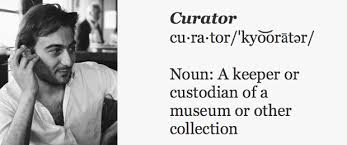
Tom Morton, Curator of the British Art Show
“Perhaps they are merely responding to the wider ‘curatorial turn’ in patterns of consumption outlined in New York-based literary magazine n+1’s collection of essays What Was the Hipster? which argues that the current generation of fashionable young things are ‘prosumers’ who prefer to select cultural artifacts rather than produce them, brandishing them ‘like capital’,” Tom Morton, Curator of the British Art Show
The view of curation as having a cultural hegemony and filtering into the pretentious rhetoric of the fashionista is not peculiar to Morton,
“Blogs are curated. So are holiday gift guides. So are cliques, play lists, and restaurant menus. “Curated,” a word that barely existed forty years ago, has somehow come to qualify everything in our lives,” Miya Tokumitsu 2015
Concurring with Morton, Miya Tokumitsu (Journalist and art educator) also highlights the commercial forces as responsible for the broad spreading of the trend,

Dr Miya Tokumitsu is a lecturer in Early Modern art history at the University of Melbourne.
“One simple explanation is prestige appropriation. This is understandable— “curation” lends the cultural capital and seriousness associated with art institutions to the mundane assemblages of our lives. Curating an Instagram feed or Christmas list sounds more legitimate, somehow, than simply having a social media profile or scribbling on a piece of paper,” Miya Tokumitsu 2015
Tokumitsu like Morton though is also clear that ultimately the modern consumer-individual has embraced this as it validates and reinforces a superficiality that is, the fashion, in liberal democratic societies. Tokumitsu also highlights, quoting the curator Choire Sicha, that a certain defensive snobbery has emerged due to the intrusion on to the curator-stars, territory,
“professional curators have become fiercely defensive of the word: “As a former actual curator, of like, actual art and whatnot, I think I’m fairly well positioned to say that you folks with your blog and your Tumblr and your whatever are not actually engaged in the process of curation,” wrote Choire Sicha at The Awl,” Miya Tokumitsu 2015
The purpose of this piece is to offer a similar but more robust criticism than either Morton or Tokumitsu do in their valuable and accessible writing regarding curation. This is not to say that all curation is bad, but to balance what has become an inflated position, and to take a distance from what is becoming an unassailable culture title in the arts.
Relent to the Curator Star? or Bite the Hand that Feeds you!
A fairly comprehensive list of recent influential curators can be found at www.artsy.net, the editors offer a brief justification of each person on the list and their decisions, they claim are also informed by neutral data,
“Informed by the insights of Artsy’s editors, and bolstered by data from UBS’s art news app Planet Art, the curators of these shows emerged as making the most impact on the institutional landscape this year,” Artsy Editors 2016
Lists of this sort, or checking the curatorial roles at large public or private institutions also offer clear information and leave us in no doubt to the importance of the curator and their, niche, but never the less powerful positions. Note the wording above, ‘the curators of these shows emerged as making the most impact on the institutional landscape this year’ However it’s the super star, Hans Ulrich Obrist, Art reviews ‘most powerful figure’ (ranked number one) that typifies the curator star; he is the author of a book, ‘Ways of Curating,’ more importantly he is widely seen as a benign force,
“I really do think artists are the most important people on the planet, and if what I do is a utility and helps them, then that makes me happy. I want to be helpful,” Hans Ulrich Obrist
There is no reason to doubt this, Obrist really does want these things, that’s why he is a perfect example. But what if his well-intentioned activity diminishes the art he loves so much?
Is the modern curator star really anything more than a culture bureaucrat? An administrator for institutions? A non-essential, puffed up mandarin with a cool haircut and an extended vocabulary (The kind that would get on the wrong side of George Orwell in the infamous, ‘Politics and the English Language’ 1946)
“He (Obrist) likes to quote J. G. Ballard’s claim that the most beautiful building in London is the Hilton Hotel at Heathrow Airport, and the postcolonial scholar Homi Bhabha’s observation that “in-betweenness is a fundamental condition of our times.” Obrist is enormously fond of quoting,” D.T. Max 2014
The Curator in the modern art world is akin to a DJ in the music industry (another role which has received a huge increase in kudos) ranging from the local amateur (someone with their own decks) trying to make a name and playing with, all the old clichés to the skilled professional upgrading ordinary pop with their Midas touch, think David Guetta.
The art world, as many of the initiated will already know is not a unified, coherent or even consistent entity; its sprawling, many headed and very fickle,
“Obrist was in and out remarkably quickly, like a man with a plane to catch. If a gallery representative took more than twenty seconds to explain a work, Obrist turned his attention to his iPhone. Though he likes to learn, he doesn’t like to be told what to pay attention to,” D.T. Max 2014

Obrist in New Delhi India 2011
That landscape is perfect for the curator. An artist for example, even a modern one who makes work with sound, or performs, or installs has to be rather involved in their medium (exception being of course the artist who does not make their own work but sends designs to fabricators) Assuming the artist is developing their own work and realizing their ideas through a process which has required skill, experimentation and labor; that sequence of events precludes them from continually adapting to fashions even, if they want too. Big problem, in the fast moving demand driven world of modern art commerce.
An artist has to be (or rather often is): trained, then finds their voice; which may include subverting or denying their training, experiment with their chosen mediums, develop sophistication, create a body of work, look for opportunities and repeat. Add to this the fact that almost no practicing artists make their entire income from their work and require a second or main job,
“Right now, the economic climate for artists in this country looks particularly bleak. There’s the innate financial ¬instability of most artistic careers (low earnings, and sometimes none at all; little job security; no pension or other benefits), together with the recession. Then there’s the fact that – ¬unlike some European and Scandinavian countries – the British government makes no ¬specific social provision for artists, ¬unless through the publicly funded ¬regional arts councils,” Laura Barnett, 2010
This is a big disadvantage in the modern art world and it does not affect the curator.
Even an established artist with lots time on their hands, again assuming that they make their own work; will have to go through a fairly lengthy and somewhat similar process to the one mentioned above, albeit perhaps with a grant in hand or a small group of assistants.
Please remember before you pick holes that almost every contemporary artist you will be able to think of has undergone an art education and as such is absolutely subject to the process mentioned above in various degrees and with some additions.
The Perfect Environment
So why is this such a problem? There are obvious points, such as time, mental energy, and timing (just as one idea matures and is finalized you find your four years behind the times) Since the artist is embedded and involved in a practice their time is split; they don’t have time to write copy, design posters, travel to meet other artists, make funding applications or theorize their practice into a non-fiction book. Or rather they can’t do it as well or as competitively as the specialist who only does this, can do. Finance is another obvious point the above mentioned activities require money, money that the early career artist is spending on renting space or buying materials. Then there are more subtle aspects.
Curators like those mentioned above are really ‘theory people’ theory is how they legitimate their power. They, think about art, they write about art, they organize art. They contextualize work in the traditional mode or today they may speak of creating constellations of meaning, or connections between ideas and practices. They tend towards analysis rather than experience and they have an organizational distance from the work they engage with. This is a very different position from the artist who makes the work and risks in so doing, and it’s different from the viewer who experiences the work and risks in so doing.
Theory in art education and in the broader commercial art world has become more and more important after the weakening of rules to govern what makes art, art. Theory; writing and talking about art in an intellectual way, with recourse to jargon and reference to the texts of philosophers is a way to give force to works in an expanded art world which cannot depend on established shared values to legitimate work, and where experience of art now includes wall texts, leaflets and audio commentary.

Like butterflies? why not push a pin through them? another form of love?
The curator’s theory pins art to a board like a collection of dead butterflies in a Victorian display case. The intrusion of the curators contextualizing, interpretations; in the case of: wall texts, leaflets, books and so on, eliminates the ambiguity which is the trigger for a unique cathartic experience on the part of the viewer (the aforementioned risk of engagement being that you are changed or enhanced by work often in the form of being challenged).
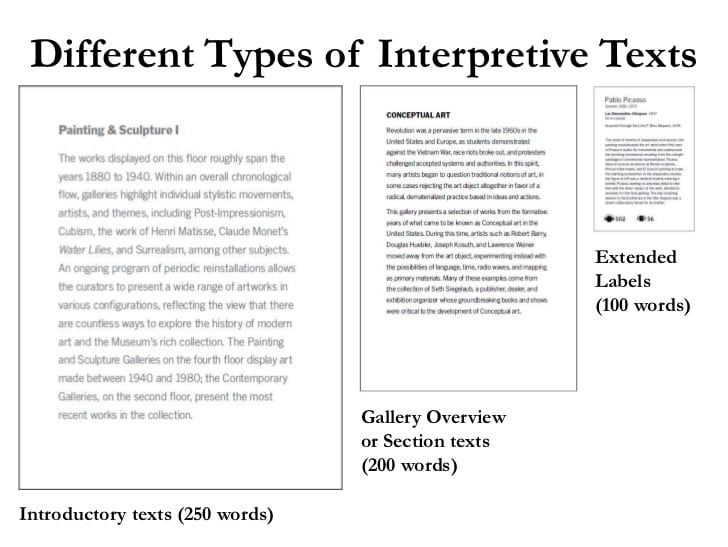
An introductory guide form MOMA regarding the wall text
The contrast between someone else’s rules and your own discovery is useful here. Effectively a wall text which explains or contextualizes the work, mortifies it, kills it.
You might like to feel you’re learning but you sacrifice your own spark, don’t read them, interpret!
It challenges and beats down any emerging interpretations from the viewer. Recall the difference between seeing a fox in the wild and seeing a taxidermy fox stuffed in the window of an old shop. The fox is there but somehow it’s the taxidermist whose presence dominates in the dead eyes, the contrived stance and unconvincing diorama.

Victorian Taxidermy Fox
The modern Curator is a more cynical conductor here unable to be in the moment without reference to theory. Yes, a curator can be a viewer. Yes, a curator can be an artist; but theory and the deadening of art is how the curator or person in curatorial mode ascends above the work. How they make themselves essential in the process of bringing art to the people.
Finally and most desperately, while curators can legitimate their power in the art world via theoretical contextualization this behaviour is secondary to the more solid positions in which they are employed; from where, they are the doorway into the art world. Artists for the most part are not employed by museums, art galleries or awarding bodies. Curators are. They become the star without having to make anything, but deals. They are the most, well-adjusted to the market since their activity is never in spite of it but always in its favour, and their actions are haute-couture exaggerations of the lame activities of the hipster,
“Soon he was collecting postcards of famous paintings—“my musée imaginaire,” he calls it. ‘I would organize them according to criteria: by period, by style, by color,’…(later comes developing an interest in the online community) These works feel modern, in part, because they mirror the group decision-making found online; at the same time, they foster interactivity without leaving people isolated in front of screens. The Internet is always on Obrist’s mind,” D. T. Max 2014
For Obrist painting is not one of the big five (although his views seem to shift depending on what interview you read) painting is more like a wily but too familiar native fox, its potential for self-aggrandizing the curator-star is limited; painting is less plastic for the curator-star, limiting the supposed value they bring in placing things profoundly; although its accessibility and immediacy is essential for art makers and its loved by the viewing public, shows of Munch, Van Gough, and the Impressionists and various others are always well populated,
“Obrist is not interested in all art equally. He can be sceptical about painting, because at this point, he told me, it’s difficult to do meaningful work in that medium. For him, art, even old art, must be speaking to something current. “I don’t wake up in the morning and think about Franz Kline,” he said. The art he is most passionate about doesn’t hang on walls and often doesn’t have a permanent emanation. It can take the form of a dance or a game or a science experiment, and often leaves nothing behind but memories and an exhibition catalogue. (Obrist has published more than two hundred catalogues.)” D. T. Max 2014

Franz Kline in his studio
The medium can also be too unwieldly and difficult to pry apart theoretically having a weighty and long history stretching back before the 19th century. It’s harder to dominate. Can we really accept that it’s not possible to make meaningful work in this medium today? In the time when anything goes?
Painting is side-lined not because it’s irrelevant, but because it’s not overly useful to the curator-star, it tends to be shown on walls; in Obrist’s case, ‘the white cube of the gallery irks him,’ If your keen to make a name for yourself as an avant-garde DJ of art the care and display of paintings, is just not flash enough. This is not peculiar to Obrist, you will find many curator-stars espousing a similar argument. Honesty would expose a vulgar display of their power and wake up some artists to who exactly the outcome of their labour (art) actually benefits.
A Certain Kind of Love
Collecting and displaying things does express a certain kind of love; Major Percy Powell-Cotton (born 1866) was an English explorer who, loved animals; he is remembered as an early conservationist and as a useful person to the fields of zoological study, despite personally killing possibly more wildlife than any other person living at the time,
“Powell-Cotton is noted for bringing an extraordinary number of animal specimens back from his travels across Africa, potentially creating the largest collection of game ever shot by one man,” Spence, Keith (1999)
There is no doubt that cotton was fascinated by animals, would have fought their cause in his activities and did promote, in his way wildlife, but, it is a strange sort of affection that prompted him to end the life of so many fantastic creatures,
“In 1907, still on his honeymoon expedition, Powell-Cotton was badly mauled by a lion he had thought incapacitated by a precious shot. As he approached it, the lion leapt up and attacked with its claws and jaw. Powell-Cotton escaped relatively unharmed due to a rolled up copy of Punch magazine in his breast pocket protecting him from the majority of the lion’s attacks,” Entrance Hall: Powell-Cotton Museum
Calling the lion’s death a sad fate is in no way a wish that it had killed Cotton but it’s also difficult to think of it in any other way. The animal’s instincts were correct, it lashed out at a man who had already tried to kill it, and its failure is recalled in the macabre display below. The Buffalo, also shot by Powell-Cotton was named in his honour.
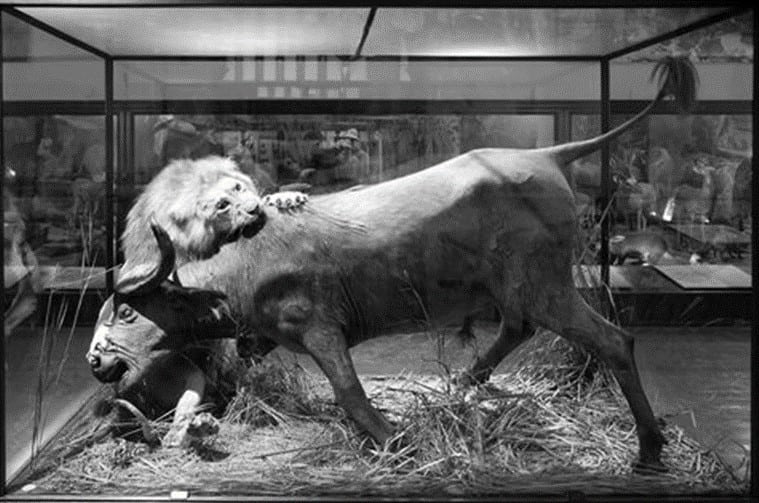
Animated lion and African buffalo, Powell-Cotton Museum, Kent England
“(Regarding Powell-Cotton) …this anxiety, and/or recklessness, caused by the human desire not to ‘lose’ something, becomes an irredeemable, perpetual cycle, rooted in collections, museums, objects and archives,” Kathryn Lloyd, 2018
Compare and contrast,
“(Regarding Obrist)…Ideally, he records them using three digital recorders, to make sure that nothing gets lost…Obrist is obsessed with the not-yet-done. His favorite question is “Do you have any unfinished or unrealized projects?” D. T. Max 2014
Curators do love art, in the same way that the great white hunter loves animals.
What Sort of Hunter is Obrist?
The work ‘Black Mirror’ 2011 by Doug Aitkin is an example of the kind of art that would impress Obrist (Aitkin was awarded ‘The Frontier Art Prize’ in 2017, Obrist was on the panel) the work represents his strange, slightly alien and groundless existence,

Doug Aitken, Black Mirror performance Hydra, Greece, 2011
“LIFE in the 21st century can feel like an infinite loop of security checkpoints, rolling luggage and brief electronic exchanges, at least to a constant traveler like the artist Doug Aitken, whose latest work, a video installation called “Black Mirror,” explores the placelessness and alienation of people in nonstop motion,” Dorothy Spears, 2011
Aitkin’s piece was an impressive multi-disciplinary work including video, performance (from the compelling Chloe Sevigny) projections, live music and an online interactive element for those not lucky enough to travel to the island where it was filmed (the audience consisted of millionaires, and art world insiders) It represents the glamourous alienation of the groundless international traveller (Sevigny) the filming is luxurious and the sound is dense. The installation/performance is luxury all the way,
“You’ve been invited as a guest of a billionaire industrialist who is mad about art. His two yachts bear the marks of some of the world’s most famous artists: Yacht #1 is named Protect Me From What I Want, after the famous “Truism” by Jenny Holzer (this scenario, very haute-capitalist, is like a tycoon hiring Karl Marx to do stand-up at his birthday party), and Yacht #2 was designed by the favoured artist of billionaires everywhere, Jeff Koons, and has been christened, with what one hopes is self-conscious humour, Guilty,” Andrew Berardini, 2011
Sevigny’s narration is hypnotic and while there is a sense of alienation and statelessness it is also not a critique of that, rather it simply presents it much like exotic locations in film pander to the audience. Aitkin’s work describes the world as Obrist and those like him experience it, they are floaters above the contexts of others dipping in where the fancy takes them,

Doug Aitken, Black Mirror performance Hydra, Greece, 2011 (centre: Chloe Sevigny)
“But on weekends Obrist becomes who he truly is: a traveller. By his count, he has made roughly two thousand trips in the past twenty years, and while in London I discovered that he had been away fifty of the previous fifty-two weekends. He goes to meet emerging artists and check in with old ones, to see shows small and large. The kind of culture he cares about is mobile and far-flung and can be grasped better on the move,” D. T. Max 2014
Chaser of fashions, never embedded in the plight or struggle of the work or subject matter that finds favour, and unlike the artist never risking the epic failure involved in the creative act,
“… ‘The Arab Apocalypse.’ He said (Obrist), ‘This has something of the Gesamtkunstwerk’—a complete, or all-encompassing, art work. The term is often associated with the sprawling operas of Richard Wagner, but for Obrist it can be something much more nimble—a protean creation that is remade over time, absorbing fresh influences from people who engage with it. Something, in other words, much like himself,” D. T. Max 2014
Others risk, the curator-star profits, moves on and finds another resource to mine in the pursuit of their career; there is benefit of course, for those directly touched by their activities but agency is sacrificed across the industry in an art world where the curator is the savvy insider, and countless souls are left untouched.
A return to the ‘crura’(care) of Souls
It’s a romantic notion but something like the ‘cura’ of souls would represent a more complete and un-alienated relationship of creatives with their work, employing ritual and adding a layer of meaning. Artists curating for themselves and curators making work would be a way to heal this division; a whole active relationship with the work and the audience, a care.
Curation should be an extension of the artists practice not farmed out to industry insiders. An attitude from artists to their work which sees it as something more than a commodity, and in the end simply taking the reins and doing what matters to them without the middle men (and women).
If they do they will find themselves competing with curator-stars, make no mistake the people who think artists are ‘the most important people in the world’ will bring all their established power to bare in maintaining their essential position in the creative world. It would be naïve to think otherwise.

Natalie Andrews is an artist working with a range of mediums, she has shown her work at the Hoxton Arches in London and is currently working on a number of 3d works alongside painting exploring the links between painting and sculpture;
“I am interested in the way that we relate to one another and with space, how the environments we inhabit structure and dictate these relationships and create both opportunities for emancipation but also the deep alienation and separateness.”

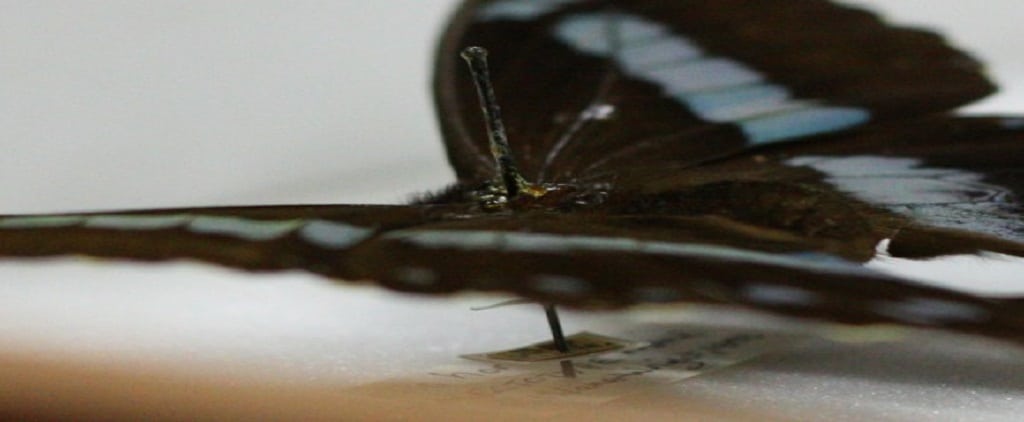





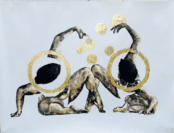
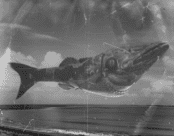












Excellent excellent article. Thank you! I think you like my take on it a few years ago. http://brandl-art-articles.blogspot.com/2012/11/the-artworld-pyramid-shift.html